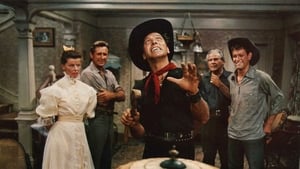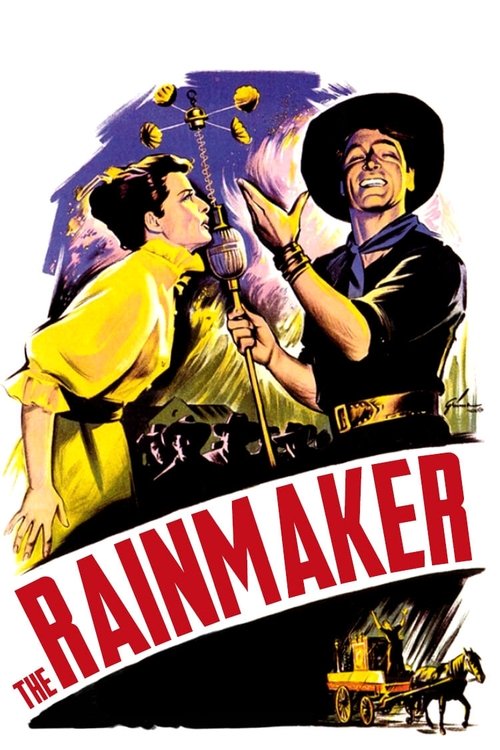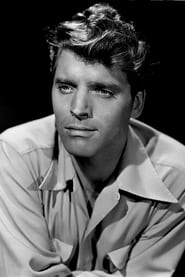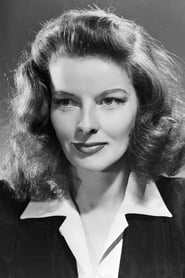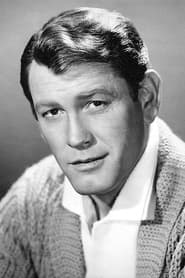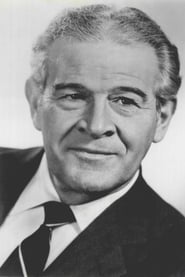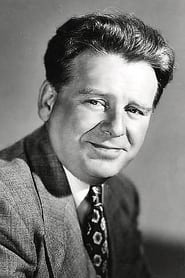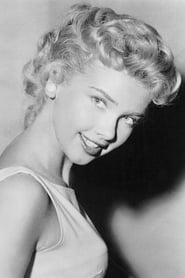Cast
View AllCrew
Director
- Joseph Anthony
Producer
- Hal B. Wallis
Reviews
John Chard
There once was an ugly duckling...
The Rainmaker is directed by Joseph Anthony and written by N. Richard Nash. It stars Burt Lancaster, Katharine Hepburn, Wendell Corey, Lloyd Bridges, Cameron Prud'Homme and Earl Holliman. Music is by Alex North and VistaVision/Technicolor cinematography is by Charles Lang.
Starbuck (Lancaster) is a conman who arrives in the little town of Threepoint and promises to deliver the rain to end the town's crippling drought problem. More telling, perhaps, will be his impact on the Curry family...
N. Richard Nash wrote it as a television play and would then see it hit the Broadway stage, so he was the logical choice for screenplay duties here. The film very much feels like a play, with very pronounced acting and sharp dialogue, it's also - at just over two hours in length - far too long for a talky based production. Thirty minutes could quite easily have been shaved off here. There's also the contentious casting of the Oscar Nominated Hepburn, who in many people's eyes - myself included - is miscast and just doesn't sit right in the role, leaving it to Lancaster to bring the flight and breeze to light up the piece.
However, to enjoy the art of acting brings some rewards, it's also a pic of crafty humour and features a story of considerable humane substance. That one man, a scallywag, can have such a positive impact on a sterile backwater family, builds nicely to an ending that is a complete joy, a real smile raiser. It's also handsomely photographed by Lang, the colour lensing so smooth, and the production design, backed up by North's most appealing musical score, ensures you know that the makers cared about what they were doing. Relationships on set were initially rocky, but the principal stars would come to be friends and speak fondly of their time on the film. 6/10
Footnote: The material would also be turned into a musical titled 110 in the Shade.
Aug 7, 2016
Thematic Analysis
The Rainmaker represents a fascinating example of Romance/Western cinema, offering viewers a unique perspective on the human experience and societal structures. The film's approach to its themes demonstrates a creative vision that distinguishes it within its genre.
Director Joseph Anthony brings their distinctive visual style to this film, continuing their exploration of themes seen in their previous works while adding new elements. Their approach to pacing and visual storytelling creates a viewing experience that rewards close attention.
Released in 1956, the film exists within a cultural context that now offers viewers historical perspective on the social issues of that era. Its reception demonstrates the diverse reactions to its artistic choices and its place in cinema history.
Did You Know?
- The production of The Rainmaker took approximately 18 months from pre-production to final cut.
- The final cut of the film runs for 121 minutes, though the director's initial assembly was reportedly 162 minutes long.
- Some visual effects sequences took up to 6 months to complete.
- Several scenes were filmed in multiple locations to capture the perfect setting.
- The musical score contains over 55 unique compositions.
Historical Context
- In 1956, when this film was released:
- Television was becoming a dominant form of home entertainment.
- Rock and roll music was revolutionizing popular culture.
- The film industry was dominated by major studios, with independent cinema still in its early development.
How This Film Stands Out
While The Rainmaker shares thematic elements with other films in its genre, it distinguishes itself through its unique approach to storytelling, visual style, and character development.
Unlike Aba the Deported, which focuses more on action than character development, The Rainmaker offers a fresh perspective through its innovative visual language and narrative structure.
While films like Provo and Oklahoma! explore similar territory, The Rainmaker stands apart through its distinctive directorial vision and pacing.
This film's unique contribution to cinema lies in its bold artistic choices and willingness to challenge viewer expectations, making it a valuable addition to its genre.
Details
- Release Date: December 13, 1956
- Runtime: 2h 1m
